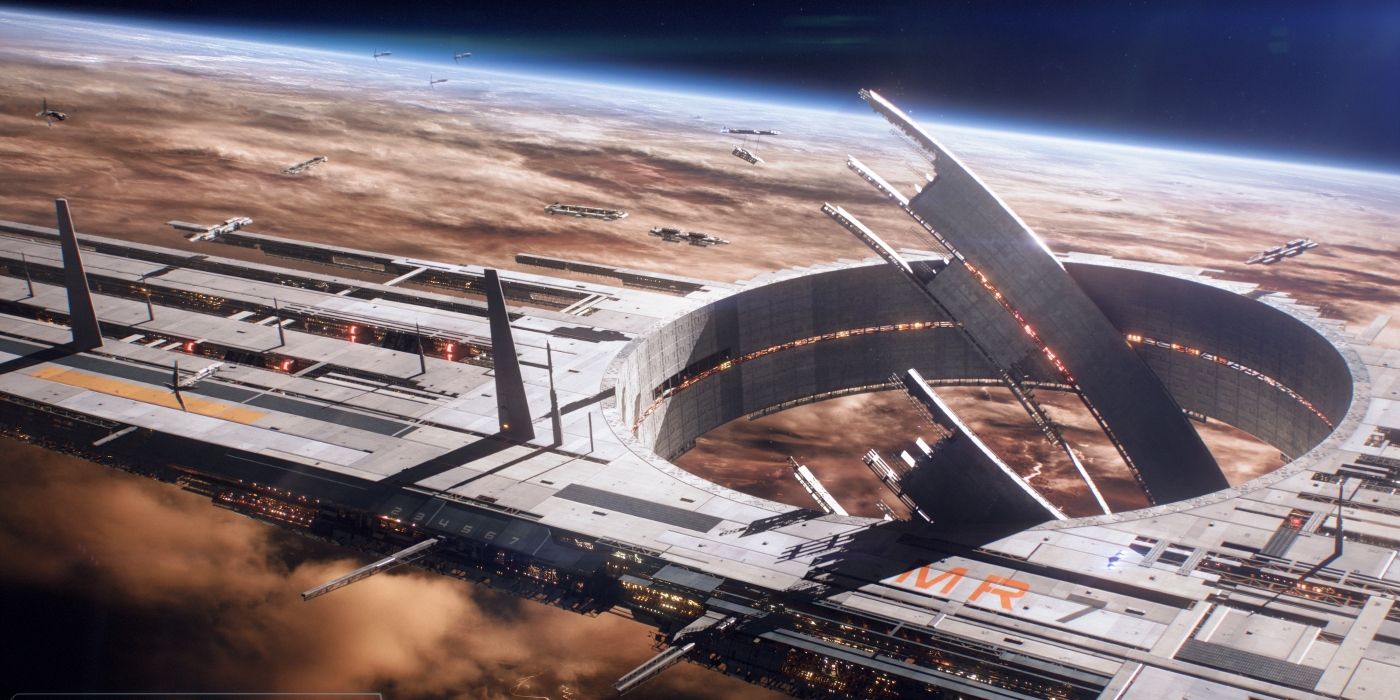Early theories predicting that the next Mass Effect game would take place after a major time skip don’t seem as likely as they used to. While the original trilogy’s conclusion left some open ends, developer BioWare seemed content to leave the Milky Way galaxy behind for new worlds, as evidenced by 2017’s Mass Effect: Andromeda‘s exploration of an entirely new galaxy. However, if Andromeda was meant to establish the new normal for the franchise’s future, the game’s mediocre reception may have hurt the odds that the setting would return. When the teaser first appeared for the next entry in the Mass Effect series it quickly became clear that players would be returning to the Milky Way and speculation ensued, with a popular theory suggesting the new game would take place centuries after the events of Mass Effect 3 to distance the new plot from the trilogy’s highly variable events.However, an N7 Day teaser video from Mass Effect on Twitter calls this into question. The video itself is a mostly-still shot of an under-construction Mass Relay (to replace those destroyed in several of Mass Effect 3‘s endings), with audio containing an initially coded message from the iconic Asari squad member Liara T’Soni, who had also appeared in the new game’s initial teaser. None of this inherently suggests or disproves a time skip, but a small, easy-to-miss detail warrants inspection and gives cause to examine the evidence supporting the popular theory in the first place.
Mass Effect 4 Teasers Hold More Evidence About Its Timeline Placement

Tucked away in the corner of the teaser video is a date and time. Fittingly, the day is November 7 – N7 Day, to Mass Effect fans. More interesting, however, is the year; while it’s only represented by two digits, those numbers are “90.” Mass Effect 3‘s story and ending are in the year 2186, so it seems likely the date in question is 2190, even if it’s not guaranteed. A four-year time skip is a far cry from the hundreds of years suggested by some, so it’s worth examining the evidence that gave rise to this theory in the first place.
In truth, there’s only one piece of hard evidence supporting a time skip, and it’s tenuous at best. When the initial teaser for the next Mass Effect game was released in late 2020, fans noticed that Liara appeared to have a few more wrinkles than in her previous appearance. Mass Effect‘s Asari have incredibly long lifespans, and don’t age at the same rate humans do – at a little over 100 years old in the original trilogy, Liara is considered very young for her species, and some fans took her changed appearance as an indicator that several centuries may have passed since she last appeared.
This isn’t the most compelling evidence, however, especially with more and more information coming to light. It’s entirely possible that Liara’s face is simply more detailed as a result of improved graphics technology; subtle lines and creases on a character’s face are far more common now than they were a decade ago. Graphical improvements in Mass Effect Legendary Edition are already proof of the improving tech, and the next Mass Effect game will surely look even better. Also worth noting is the fact that the teaser is entirely pre-rendered, which allows for greater graphical fidelity than live gameplay would.
There’s more to suggest the next game takes place shortly after the trilogy. The 2020 teaser shows a fragment of Commander Shepard’s iconic N7 armor that’s damaged, but seemingly not worn down from time. Additionally, the wreckage of a Reaper looms over the landscape; while it’s massive, centuries passing should cause the machine to deteriorate – and it hasn’t. Liara’s decoded message, while still a bit garbled, holds yet other clues. Definitive claims can’t yet be made about the setting for the next Mass Effect, but the evidence is stacking up against the time jump theory.




